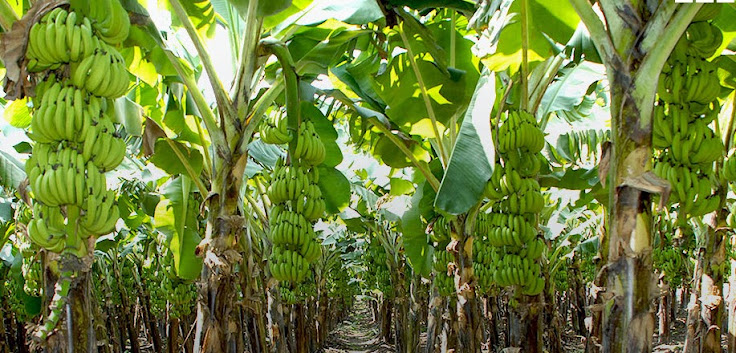.jpg) |
| A Plant Growth Room (PGR) in a Tissue culture Lab |
 | |||
| A model DBT Certificate (Blank) |
- Always procure plants from biotech companies having 'DBT' (Department of Biotechnology) certificate and those who maintain consistency in plant quality and a good brand image.
- Never purchase from brokers, dealers and agents who may issue their own Invoice instead of Invoice from Biotech Company which supplies the plants.
- Sales Invoice is one of the main proof of purchase. It should bear details of variety of the plant (say ‘Grande Naine’, ‘Red Banana’), date of purchase, date of delivery and the quantity in numbers clearly without any ambiguity. Don't accept Delivery Challans in lieu of Sales Invoice.
- Get receipt for the payment made for the purchase.
- The buyer has to visit the supplier’s nursery for on the spot assessment of quality of plants to his satisfaction before asking them to deliver the plants to his farm site.
- The selected secondary hardened plants should be well hardened for a min of 45 days, about 30 cm tall, 5 cm girth (girth of our index finger) with at least 5 to 6 fully opened healthy leaves.
- At the nursery, insist the supplier to grade plants in your presence from the fresh nursery bed where no grading was done previously and if necessary pay them extra for this additional grading work. Some nurseries maintain separate beds for 'A', 'B' and 'C' grade plants discreetly. Make sure you are getting 'A' or a mixture of A and B grade plants only that will definitely perform well. Though this method of selection is not possible with bigger companies at least pay a visit to their nursery once.
 |
| An ideal Tissue Culture Banana |
 |
| A banana Secondary Hardening Centre |
- At the nursery, avoid selecting plants from beds which were previously infected by Erwinia or Nematode and subsequently recovered.
- Identification of Tissue Culture Off type banana plants: The supplier has to segregate ‘Off type plants’ which appears varying from normal plants at all stages of development i.e., both primary and secondary hardening stages and also during selection of plants for despatch to farmers. If the screening is not effective at the nursery, some of the 'Off-type' plants will find their way to the field along with normal plants. In Tissue Culture trade and Biotechnology norms about 1 to 2% 'Off-types' in a banana field is considered as normal. Performance of these off type plants are observed as:(1) inherently weak (2) unacceptable percentage of survival and sometimes death of plants (3) poor bunch with no economic value (4) mostly without fruiting ....Etc., At best, they could be considered as ornamental plants. So, most effective screening is needed to weed out the following Off type plants:
- Avoid 'Tall plants'.
- Avoid Plants with variegated leaves.
- Avoid Plants with mosaic leaves.
- Plants with high pigmentation in leaves.
- Plants with deformed lamina.
 |
| Tissue Culture Off type banana plants |
 |
| Tissue Culture Off type banana plants |
- Avoid Dwarf plants:
- Avoid ‘Overage’ plants:
 |
| Tissue Culture Banana - Overage plants |
- Avoid ‘Virus infected’ plants.
- Avoid plants with Micronutrient deficiency:
- Various types of nursery Pots, Bags and Trays:
TC plants supplied to the farmers through these 8 cavity pro-trays (Size of a TC Banana hardening tray 32cm x 16cm, Cavity top 6.5cm x 6.5cm, Cavity bottom 5cm x 5cm, Depth 10 cm and with a excess water draining hole at the bottom) are initially not received well because the volume of growth media is less when compared to Poly bags hitherto supplied to them, resulting in heavy mortality in the field especially during summer months due to transplant shock. No complaints were received from the farmers during other seasons.
 |
| Tray holding Banana Plants in Jiffy bags |
- First 3 months from the date of planting is a very crucial development period for the plant. Make sure that any technical person from the company visits your field at least two to three times during that period and obtain ‘Field Visit Report’ or ‘Plant care recommendations note’ from him for your records. If possible maintain ‘Farming record’ and photographs of fields in all stages of plant development.
- Do not blame the supplier about quality of the plant after planting Banana in poor unfertile soils and without following any recommended cultivation practices.
- It is not advisable to store the purchased plant without planting for more than 3 or 4 days. If the planting gets postponed for more than a week due to any unavoidable circumstances, follow the maintenance schedule given here under:
- Immediately on receipt of the plants apply 10 gram of Carbofuron 3G in the polythene bag and drench the plant with ‘All 19’ water soluble foliar grade fertilizer 50 gm in 10 litres of water (Polyfeed) as foliar application. The same application without Carbofuran 3G can be repeated on every 3rd day.
- Apply 100 ml of the following solution at the root zone : MAP 1 kg + Humic Acid 500 ml dissolved in 100 litres of water.
- Three days
before planting, apply 100 ml of the following preparation as drench
into the polythene bags to wet the entire root
zone:
Mix 250 gm of Fytolan (Blue copper, COC, Copper Oxy-Chloride) + Streptomycin with Tetracycline ( Streptomil, Crocin ) which is available in 6gm pocket in the market, total 36 gm i.e 3 pockets + 100 litres of water. This application prevents Erwinia and root rot.






.jpg)











 00:46
00:46
 Tissue Culture Banana Cultivation Technology
Tissue Culture Banana Cultivation Technology






 Posted in:
Posted in: 

